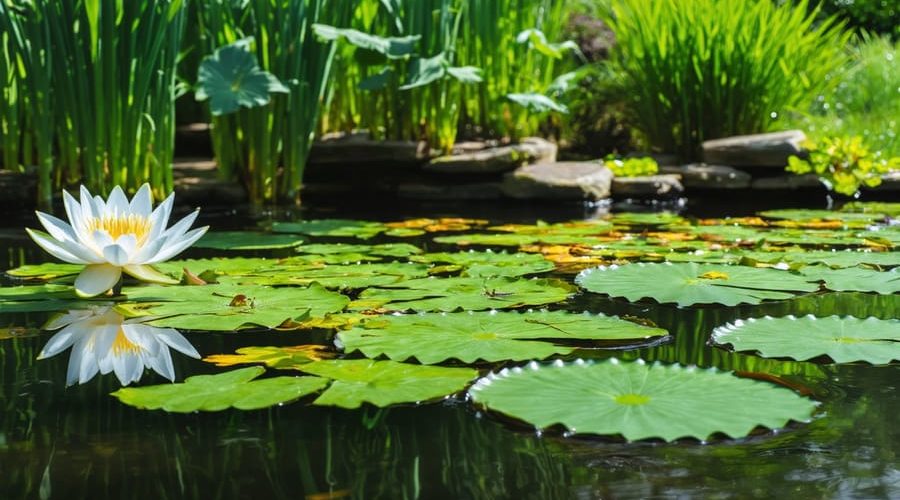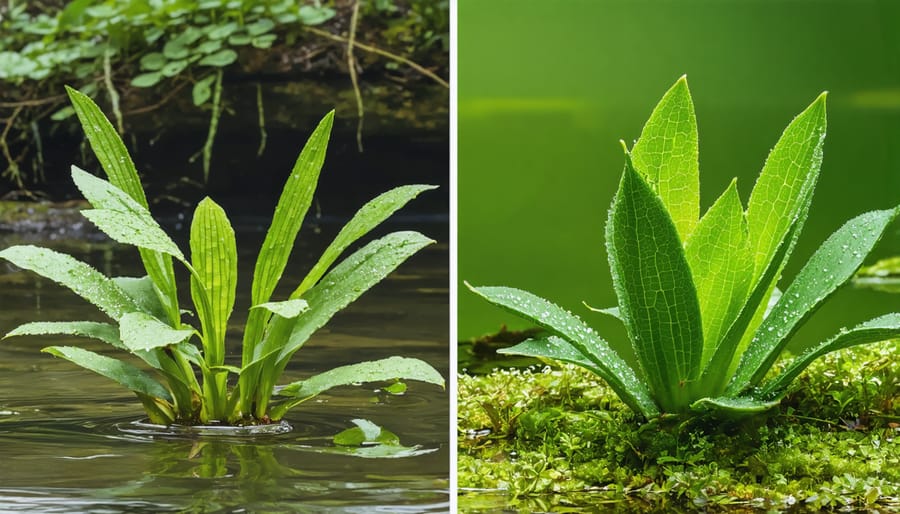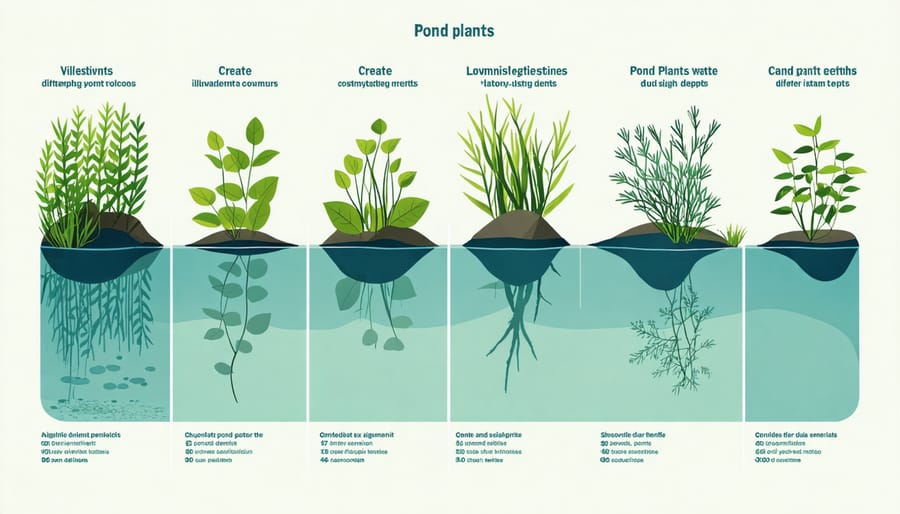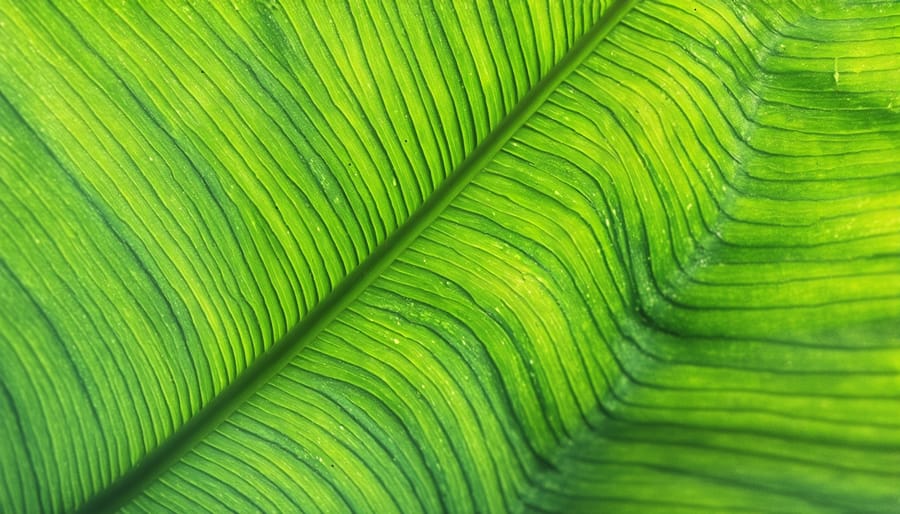
Essential Aquatic Plants That Keep Your Fish Pond Thriving
Dive into the fascinating world of aquatic plant identification with the right tools and knowledge at your fingertips. Whether you’re maintaining a backyard pond or exploring natural waterways, understanding how to identify aquatic plants is crucial for creating a healthy, balanced ecosystem. From floating beauties like water lilies to submerged vegetation that oxygenates your pond, each plant species plays a unique role in aquatic environments.
Learn to distinguish between beneficial plants that enhance water quality and potentially invasive species that could harm your pond’s ecosystem. By mastering basic identification techniques – examining leaf structure, flower characteristics, and growth patterns – you’ll make informed decisions about which plants to nurture and which to manage. This essential skill helps maintain water clarity, provides shelter for fish, and creates stunning visual appeal in your water garden.
Our comprehensive guide breaks down the key features of common aquatic plants, equipping you with practical identification methods that work for both beginners and experienced pond keepers. Whether you’re looking to stock your pond with beneficial plants or control unwanted growth, understanding proper plant identification is your first step toward successful water gardening.
Why Proper Plant Identification Matters for Your Pond
Benefits of Aquatic Plants
Aquatic plants are more than just beautiful additions to your pond – they’re essential workers in maintaining a healthy ecosystem. The oxygenation benefits of aquatic plants are crucial for fish health, but that’s just the beginning. Floating plants like water lilies provide shade that helps regulate water temperature and reduces algae growth. Submerged plants act as natural filters, absorbing excess nutrients that would otherwise feed unwanted algae.
Marginal plants growing along the edges of your pond help prevent erosion and create essential hiding spots for fish and other wildlife. They also trap sediment, keeping your water clearer. Many aquatic plants, particularly emergent varieties, remove harmful pollutants from the water through their root systems.
These green helpers also provide food and shelter for beneficial insects and small animals, creating a balanced ecosystem. When you choose the right mix of aquatic plants, you’re not just creating a prettier pond – you’re building a self-sustaining water garden that requires less maintenance and provides year-round benefits for all its inhabitants.
Avoiding Harmful Species
When maintaining your pond, it’s crucial to be aware of harmful pond species that can cause problems. Watch out for common invasive plants like Water Hyacinth and Salvinia, which can quickly overtake your pond and harm native species. These aggressive growers often have distinctive features: Water Hyacinth shows thick, glossy leaves and purple flowers, while Salvinia appears as small floating clusters with fuzzy, oval leaves.
Some aquatic plants can be toxic to fish and pets. Blue-green algae, identifiable by its slimy, paint-like surface appearance, is particularly dangerous. Yellow flag iris, though attractive with its bright yellow blooms, is also toxic. Before adding new plants, research their characteristics and check local regulations, as many invasive species are prohibited. When in doubt, consult with local garden centers or pond specialists for safe alternatives.


Common Beneficial Pond Plants
Submerged Plants
Submerged plants grow entirely underwater, creating a mesmerizing underwater garden while serving crucial roles in your pond’s ecosystem. These aquatic workhorses help maintain water clarity, provide shelter for fish, and compete with algae for nutrients.
When identifying submerged plants, look for their distinctive leaf structures. Hornwort features dark green, feathery leaves arranged in whorls around the stem. Anacharis displays bright green, densely packed leaves that grow in a spiral pattern. Both plants float freely or can be anchored to the bottom.
Fanwort is recognizable by its fan-shaped leaves that fork into fine segments, creating an elegant underwater display. Water milfoil has finely divided, feather-like leaves arranged in groups of four around the stem. These characteristics become more visible when you gently lift a portion of the plant above water.
Most submerged plants prefer full sun to partial shade and can grow quite rapidly in optimal conditions. They’re excellent oxygenators, releasing oxygen directly into the water during photosynthesis. This makes them particularly valuable for fish health and overall pond balance.
When introducing these plants, start with small groups and monitor their growth. Some species can become vigorous growers and may need occasional thinning to prevent overcrowding. The best time to identify and maintain these plants is during regular pond maintenance when water clarity is at its best.
Floating Plants
Floating plants are nature’s sun umbrellas for your pond, creating a beautiful carpet of greenery on the water’s surface. These unique plants don’t need soil to thrive – their roots dangle freely in the water while their leaves float on top. Popular varieties include water lettuce, with its velvety rosettes, and duckweed, which forms tiny green dots across the surface.
You can identify floating plants by their specialized structures. Look for spongy leaf surfaces that help them stay buoyant and root systems that hang like curtains beneath the water. Most floating plants have waxy or water-repellent leaves that prevent them from becoming waterlogged.
These plants play crucial roles in your pond ecosystem. They provide shade that helps control algae growth and keeps water temperatures stable. Their hanging roots create perfect hiding spots for fish fry and catch excess nutrients from the water. Many floating plants also produce lovely flowers, like the water hyacinth with its striking purple blooms.
When identifying floating plants, pay attention to leaf patterns, root length, and flower characteristics. Water lettuce has distinct ribbed leaves arranged like heads of lettuce, while salvinia shows small, overlapping leaves with bristly surfaces. Frogbit can be recognized by its heart-shaped leaves and small white flowers.
Remember that some floating plants can grow rapidly, so it’s important to maintain proper coverage – about 50-60% of your pond’s surface is ideal.
Marginal Plants
Marginal plants, growing along the edges of your pond, are often the easiest to identify due to their visibility and distinctive characteristics. These plants typically have their roots underwater while their foliage grows above the water’s surface, creating a beautiful transition between your pond and garden.
Look for plants like Purple Loosestrife, which features tall spikes of vibrant purple flowers, or the distinctive sword-shaped leaves of Yellow Iris. Cattails are particularly easy to spot with their characteristic brown, cigar-shaped seed heads standing tall above the water.
Many marginal plants offer more than just aesthetic value – some are actually edible pond plants that can enhance your garden’s functionality. Rush plants can be identified by their round, dark green stems growing in clumps, while Sweet Flag is recognizable by its sweet-smelling, sword-like leaves.
When identifying marginal plants, pay attention to leaf shape, flower color, and growth pattern. Plants like Water Mint can be recognized by their square stems and aromatic leaves, while Marsh Marigold stands out with its bright yellow flowers in spring. Remember that healthy marginal plants should have firm stems and vibrant foliage without any signs of yellowing or decay.
Visual Identification Tips
Leaf Patterns and Shapes
Leaf patterns and shapes are key indicators when identifying aquatic plants. The most common patterns you’ll encounter include floating leaves, which are typically round or oval and rest flat on the water’s surface, like those of water lilies. These leaves often have a waxy coating that helps them stay buoyant and repel water.
Submerged leaves tend to be finely divided or feathery, helping the plant absorb nutrients efficiently underwater. Look for leaves that appear lace-like or ribbon-shaped, such as those found on many pond weeds and underwater grasses.
Emergent plants, which grow above the water’s surface, often have arrow-shaped or lance-shaped leaves. Cattails, for example, have long, narrow leaves that grow straight up, while arrowhead plants feature distinctive pointed leaves with two backward-pointing lobes at the base.
Pay attention to leaf edges as well. Some aquatic plants have smooth margins, while others might be serrated or wavy. The texture can also be telling – some leaves are thick and leathery, while others are thin and delicate.
Don’t forget to observe leaf arrangement. Plants may have alternating leaves along the stem, opposite pairs, or whorled patterns where several leaves emerge from the same point. These characteristics, combined with leaf shape and pattern, will help you make accurate plant identifications.

Growth Patterns
Understanding how aquatic plants grow is like unlocking a secret code for identification. These water-loving plants generally follow four main growth patterns: submersed, floating, emergent, and marginal.
Submersed plants grow completely underwater, with only their flowers occasionally reaching the surface. Think of plants like hornwort or anacharis, which create those beautiful underwater forests in your pond. Their leaves are often fine and feathery to maximize nutrient absorption from the water.
Floating plants are the free spirits of the pond world, drifting on the water’s surface with their roots dangling below. Water lettuce and duckweed are perfect examples, with their roots never needing to touch the bottom. Their leaves are typically broad and flat to help them stay buoyant.
Emergent plants root themselves in the pond bottom but send their stems and leaves above the water’s surface. Cattails and rushes fall into this category, creating that classic pond look we all love. They often have strong, sturdy stems to support their above-water growth.
Marginal plants grow along the pond’s edges or in shallow water, with most of their growth above the waterline. These plants, like iris and pickerelweed, act as a beautiful transition between your water garden and land garden. Their root systems are typically well-developed to anchor them in the muddy soil.
Knowing these growth patterns makes identifying aquatic plants much easier and helps you choose the right spots for new additions to your pond.
Seasonal Changes in Plant Identification
Spring and Summer Identification
During the growing season, aquatic plants display their most distinctive features, making identification much easier. Look for the shape and arrangement of leaves – floating plants like water lilies have large, round leaves that rest on the water’s surface, while emergent plants like cattails stand tall above the water with long, slender leaves.
Flowers are particularly helpful identifiers in spring and summer. Water lilies produce showy blooms in whites, pinks, and yellows, while pickerelweed displays striking purple spikes. Pay attention to the plant’s growth pattern – some spread through runners, while others grow in clumps.
The texture and color of leaves can also guide identification. Duckweed appears as tiny, bright green dots floating on the surface, while water hyacinth has thick, glossy leaves and distinctive lavender flowers. Submerged plants like hornwort show feathery, dark green foliage beneath the water’s surface.
For the most accurate identification, observe the plant’s position in the pond – whether it’s completely underwater, floating, or emerging above the surface. These characteristics, combined with flowering patterns, will help you confidently identify your aquatic plants.
Fall and Winter Recognition
Identifying aquatic plants during fall and winter can be challenging but not impossible. While many plants go dormant, leaving behind dried stems and seed heads, these remnants offer valuable clues for identification. Look for distinctive skeletal structures, such as the tall, brown stalks of cattails or the dried flower heads of rushes. The winter form of water lilies can be recognized by their leathery, decomposing leaves lying flat on the water’s surface.
For submerged plants, observe any remaining stems or leaf structures near the water’s edge. Take photos during the growing season to create a reference guide for winter identification. Many aquatic plants also leave behind characteristic root systems or rhizomes that persist through winter, providing additional identification features.
Keep an eye out for seed pods and fruit cases that remain after leaves have died back. For example, lotus pods are distinctively round with multiple seed chambers, while arrowhead plants leave behind spiky seed clusters. Consider marking your plants with weather-resistant tags during the growing season to help track their locations during dormancy.
Being able to identify aquatic plants in your pond is more than just a hobby – it’s a vital skill for maintaining a healthy water garden ecosystem. By learning to recognize different leaf shapes, growth patterns, and flower characteristics, you can better manage your pond’s plant population and ensure the right balance of vegetation. Remember that successful identification relies on careful observation of multiple features, from the plant’s location in the pond to its seasonal growth habits.
Taking photos and keeping records of your pond plants throughout the seasons will help you track changes and identify new specimens more easily. Don’t hesitate to use both traditional field guides and modern plant identification apps to confirm your findings. Most importantly, regular monitoring of your pond’s plant life allows you to spot potential issues early, whether it’s invasive species taking hold or beneficial plants needing more care.
For the best results, combine your plant identification skills with regular water quality testing and maintenance routines. This comprehensive approach will help ensure your pond remains a thriving, beautiful feature in your garden for years to come.
